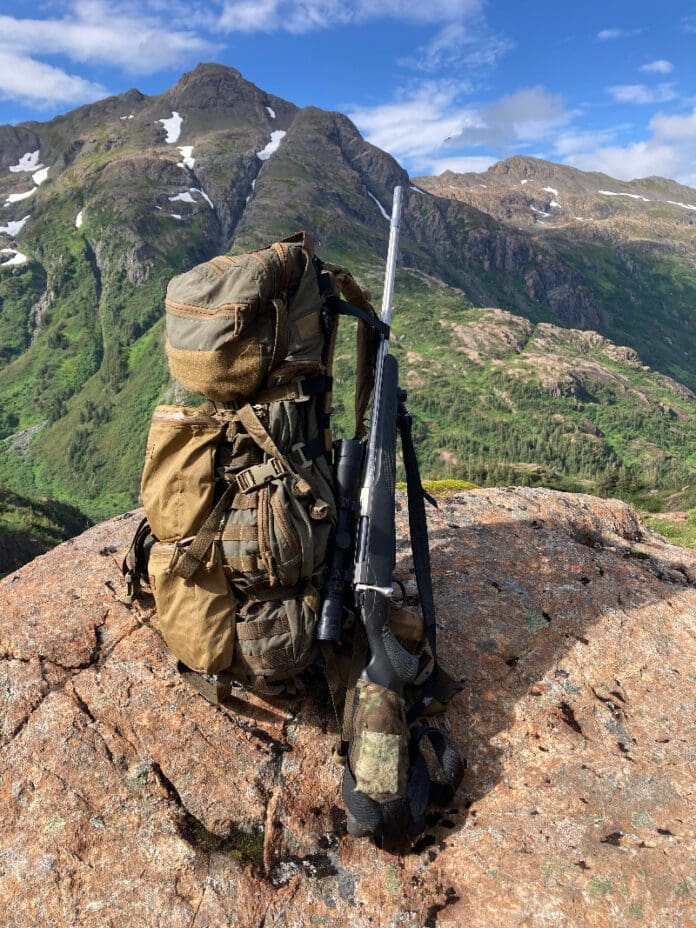My hunting career started with a ramshackle collection of hand-me-down gear and bargain store finds, anchored by my now retired Kelty freighter frame. The frustration of busting brush wearing my loaded down freighter with my rifle slung over the top post catching every alder branch is still palpable. After years of bushwhacking up an Alaskan mountain with a pack looking like the Clampetts rolling into Beverly Hills, I have vowed to find a better way. So my search for the best rifle carrier commenced.
Mountain hunting, regardless of the species you pursue, brings with it a set of challenges that the hunter must mitigate in order to find success. One such challenge that has become my focus over the past couple of seasons is finding the best system for hands-free rifle carrying. Most modern hunting packs have enough pockets and straps to accommodate securely holding your rifle, yet it comes at a price. You lose quick access to your firearm in the event of a jump shot on an animal—or for a charging grizzly.
Thankfully, the innovative hunting culture of the United States has brought forth new products that solve this problem. When it comes to securing your rifle to your pack, you really can have your cake and eat it too! There are several products available that will securely hold your rifle, while still allowing for quick deployment. I have chosen three different systems to put through the wringer over the course of the 2022 hunting season, to find which one works best for me; Kifaru Gun Bearer, Stone Glacier’s Quick Release Sling, and the Slik Sling by Creative Outdoors.
Scientific Method
I approached this review much like a scientist in a lab coat would tackle their life’s work. I had a question about which system on the market would best suit my needs and researched the available options. This led me to my simple hypothesis; which securing system would be most convenient to carry, smoothest to deploy, and easiest to reholster without doffing my pack. This then led to running my experiments, and this article is my report on my findings.
In order to keep my variables low, I used each sling with the same pack. All of my trials are conducted while wearing a Kifaru Ma Deuce on a Duplex Lite frame. I know it’s sacrilegious to use a Stone Glacier system on a Kifaru pack, but what can I say? I’m a rebel. To maintain an apples-to-apples comparison of each system, it was a necessity to commit this sin!
For this experiment, I used each system on a separate hunt. Prior to these hunts, I had never used any of these systems. Each test run was the maiden voyage for that system. First out the gate was the Stone Glacier Quick Release Sling on a 10-day spring brown bear hunt in the Alaska range. Followed by the Kifaru Gun Bearer on a 5-day spring black bear hunt on the Southern Kenai Peninsula. To finish my experiment, I used the Slik Sling by Creative Outdoors based out of Bozeman, Montana, during a 6-day mountain goat hunt back on the Kenai Peninsula.
One commonality between all three slings is that they use a cradle that is secured to the waist belt of your pack that holds the butt of your stock. This design feature is nice because it transfers the weight of the rifle directly to your hip and helps reduce the height at which the barrel protrudes above your shoulder. These types of carrying configurations are low profile, protecting your rifle and reducing entanglement hazards.
Stone Glacier Quick Release Sling
First and foremost, the Stone Glacier Sling was not designed to be used on a Kifaru frame. However, I found with a little MacGyvering I was able to integrate the provided hardware and webbing into my Kifaru frame. The reason I wanted to test the Stone Glacier system was that it positions the gun behind your shoulder and was a good contrast to the Kifaru Gun Bearer and its up-front positioning.
Below is a detailed picture of where I placed the 3-bar slider on the Kifaru frame. The slider is woven into the black webbing loop on the frame that would normally be used for either a K clip or an open-ended buckle. It was a fickle endeavor getting it in place, but it turned out to work very well.
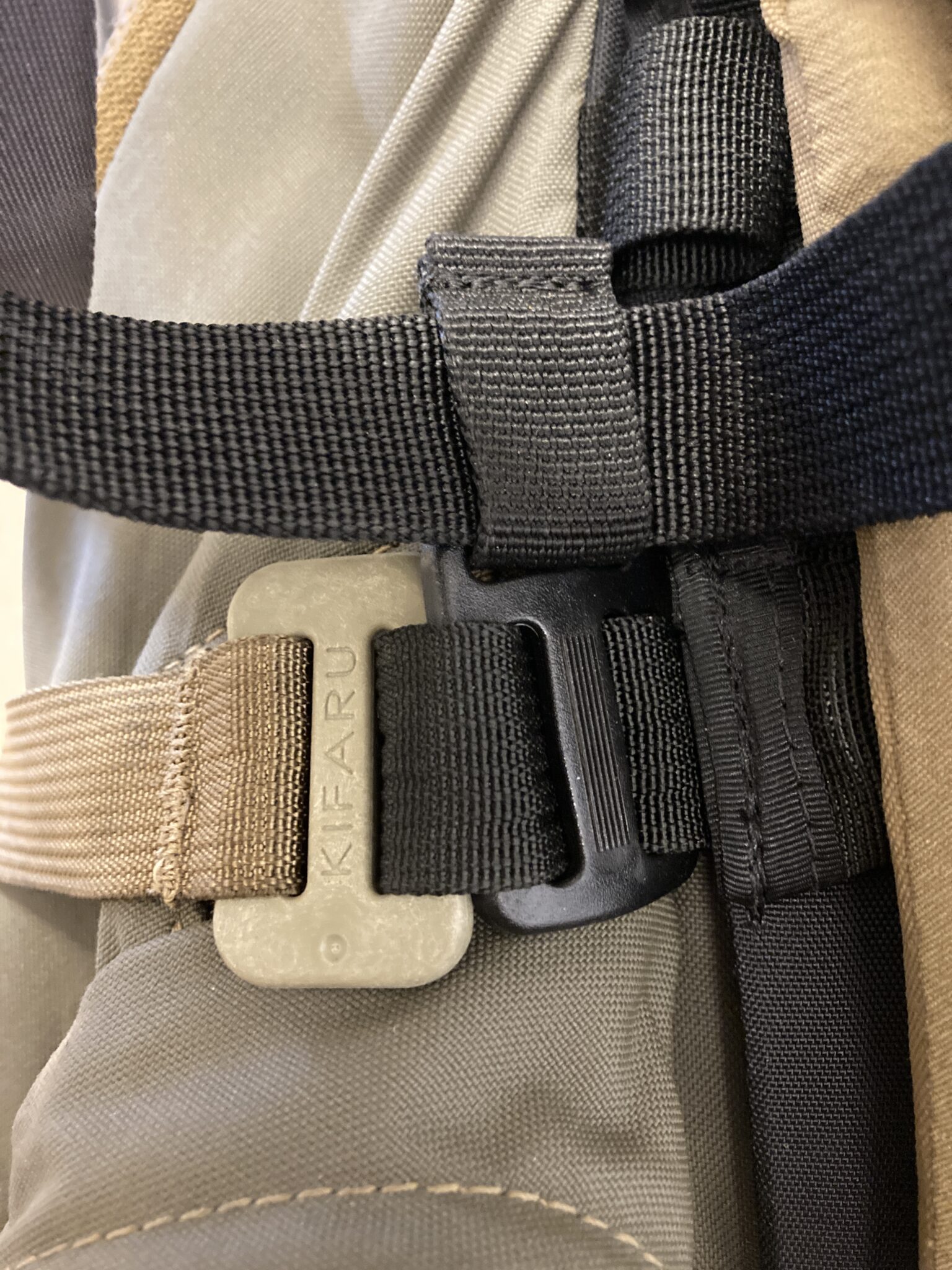
The construction of this sling uses 1-inch webbing to produce the cradle that holds the stock of the rifle. The cradle is then attached to the waist belt of your pack with the ability to adjust the ride height of your rifle. In addition, the quick-release portion of the sling is made up of 15 inches of 1” webbing with a thinner piece of ribbon scabbed onto the end as the release grab.
Carrying Convenience
Out of the three slings tested during this trial, the Stone Glacier was the most comfortable and least intrusive of the bunch. As a behind-the-shoulder style carry system, it is comparable to the Slik Sling in its design. However, Stone Glacier created a way to secure the forestock, which results in the rifle being secured closer to the frame of the pack, ultimately making it more comfortable to wear. The comfort was not compromised when the pack was loaded heavily.
Each time I donned my pack and rifle while using the Stone Glacier system, I was surprised by how much I didn’t notice my rifle. Whether bounding from rock to rock in talus fields or navigating dog-hair thick alders, the position of the rifle did not change, and was easy to proprioceptively avoid entanglements in the brush. I thoroughly enjoyed wearing my rifle while secured in the Stone Glacier Quick Release Sling. Available here
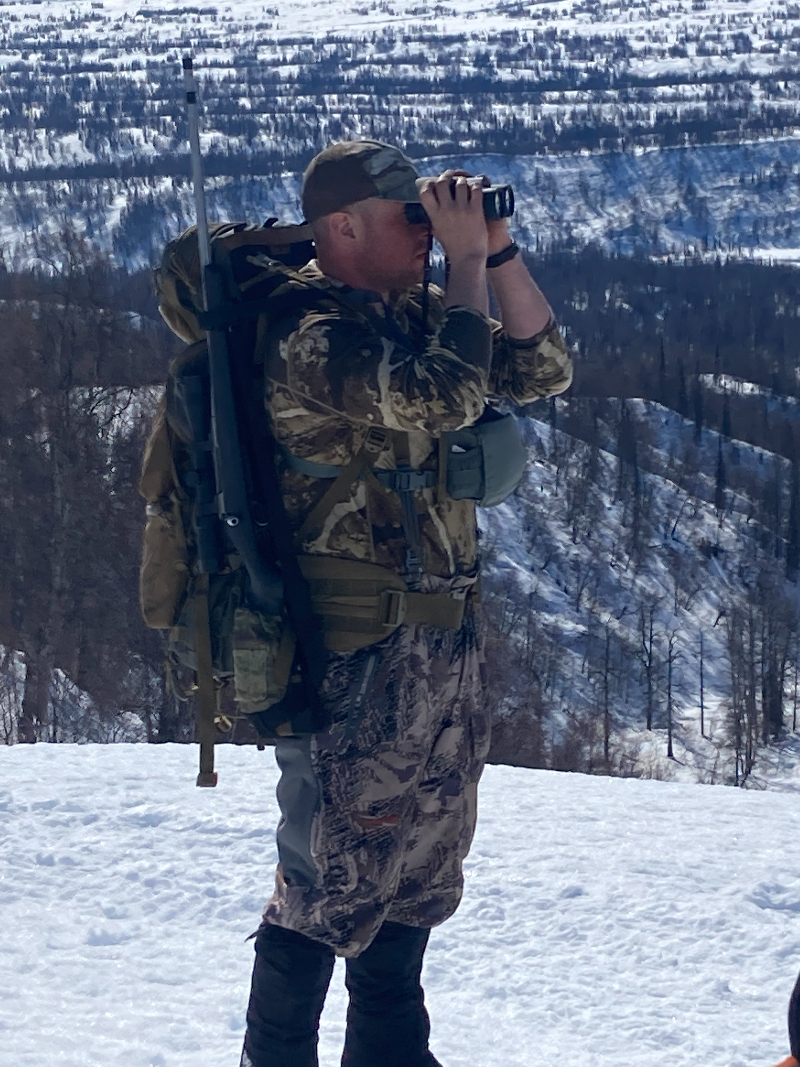
Ease of Deployment
Between the three different systems, I ranked the Stone Glacier system at number 2, with the Kifaru GunBearer squeaking by as the easiest. The Stone Glacier sling, with its distinctly different webbing for its quick release, made locating the pull cord quick and unmistakable. When the pull cord is “popped”, you receive positive tactile feedback when it’s free and ready to be shouldered.
The transition from the holster to shoulder was seamless after a half dozen practice runs. As a right-handed shooter, you pop the rifle free using your right hand, while your left hand reaches across your chest to grab the barrel of the rifle. Once your right hand has released the securing mechanism, it transitions to the pistol grip allowing you to shoulder the rifle and quickly acquire your target.
Another area of examination was how easily the rifle stock was released from the cradle in which it is resting. Of the three, the Stone Glacier cradle was the lightest, smallest, and most minimal. Due to the pliability of the Stone Glacier cradle, I was concerned that the stock, stock pack, and sling stud would snag on something during the doffing stage. However, this was unfounded. On every occasion I deployed the rifle using this system, it popped right out, unencumbered.
Reholstering Ability
Unfortunately, the Stone Glacier system was the hardest to holster my rifle while wearing my pack. Due to the design of the release system, I could not find an easy way to holster my rifle while wearing my pack. This downside is of very little significance to me. In most cases, when deploying my rifle from my pack for either a shot on a charging animal or in preparation for making a stalk, reholstering is not a time-sensitive issue. My thought process is that if I am quickly deploying my rifle for whatever reason, I will most likely not be in a rush to resecure my firearm because
A) I shot and killed the animal or
B) the situation did not call for a shot to be fired, and I will need a few minutes to regroup and
C) if a clean shot was not presented, yet the animal was not spooked and is still in play, I will continue my pursuit with the rifle in hand.
It’s a valuable feature to be able to easily holster your rifle while wearing your pack. However, of all the attributes I examined, it carried the least amount of weight.
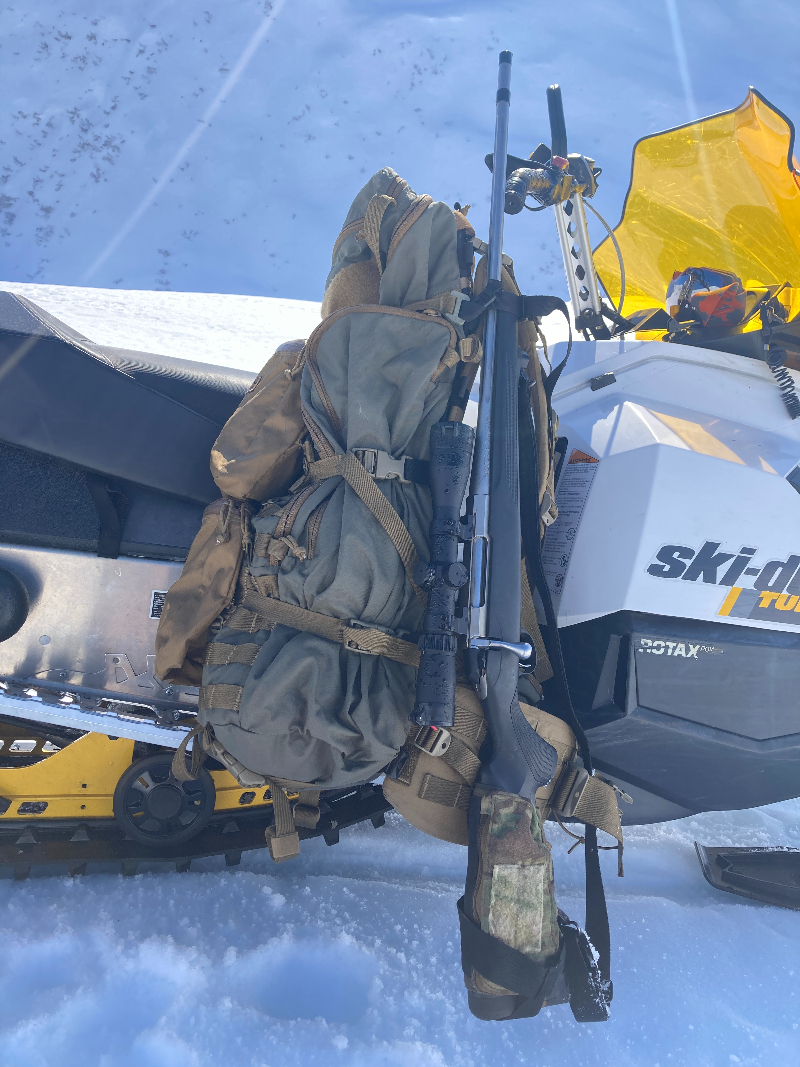
Overall Impression
I do feel a small amount of guilt for what I am about to say, being that I am a big fan of Kifaru products. However, the Stone Glacier Quick Release sling was my favorite system of the three tested. The inconspicuous nature of how my rifle melded into my pack, was the shining light. The combination of the Kifaru frame and Stone Glacier sling made carrying a rifle wonderfully easy and comfortable.
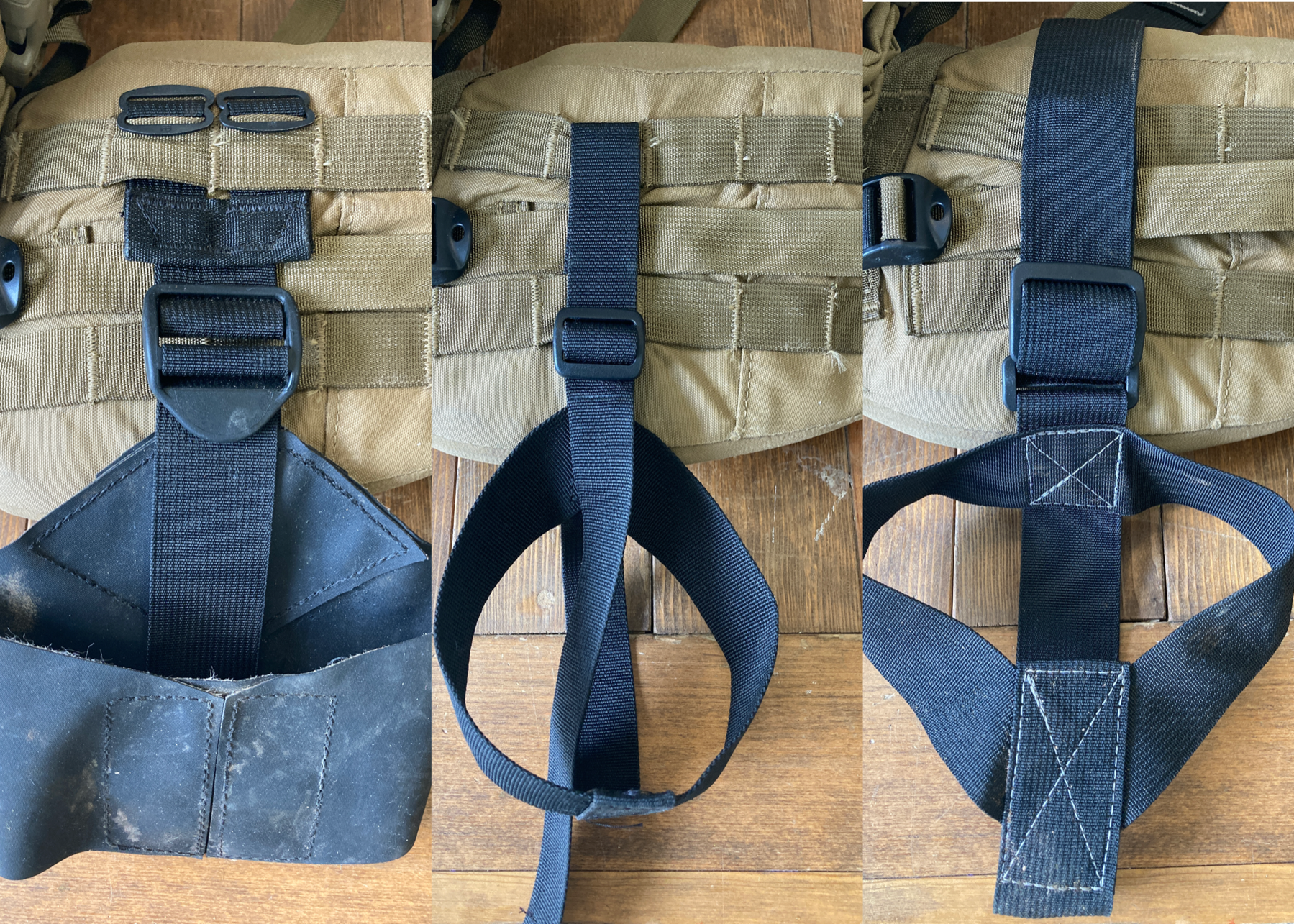
Kifaru Gun Bearer
The Gun Bearer (available here) exudes quality and durability from the onset. I used this sling on a five-day black bear hunt on the Southern Kenai Peninsula. This was a boat-based hunt in a mountainous seaside country. Once a bear was spotted, I was dropped off on shore and climbed up 1000’ – 2000’ to get on the bear. The landscape in this area is a steep, mountainous, temperate rainforest. From sea level to 2000’, you are dealt a mixture of alder-choked slopes or coniferous stands of trees interlaced with devils club and moss-laden cliffs. Coastal mountains in Alaska are the definition of a “hell hole.”
Even though this was not a backpack hunt, where you spend a lot of time wearing a pack. This hunt was a great trial of the Gun Bearer’s capability, comfort, and ability to navigate thick brush. Over the five days, I made five stalks up the mountain and several half-day excursions walking beaches at low tide. While packing out my boar, I noticed no change in the comfort or operation of the Gun Bearer. Being that this is a proprietary sling made by Kifaru for Kifaru packs, the expectation is that it would perform well. This expectation was partly correct, but not without a few snafus.
Carrying Convenience
As the only style of sling that orients the gun in front of your body, I was skeptical about carrying the gun in this manner through thick brush. My assumption was that the barrel of the gun would tangle with branches and funnel them into my face. My experience using the gunbearer was the exact opposite. Of the three slings I used, this one shurked the brush the best. Having the gun positioned directly in your field of view makes avoiding brush a breeze. With surgical precision, you can move the barrel of the rifle around any brush in your way and avoid the frustration of being entangled. It took a mile or two of “brush busting” to really get the feel for this style of carrying.
Besides busting brush, I found the Gun Bearer to be a very enjoyable way to carry a rifle. The barrel position was anticipated to be an annoyance. But, it was found to be of benefit and without much hassle. However, I did discover two issues with this style of sling.
The first problem was encountered while climbing steep hills. I’m talking about hills so steep that you need to use all four wheels to ascend the mountain, hands-and-feet type of climbing! When climbing in 4-wheel drive, the barrel of the gun would end up impaling the dirt. Even though my barrel end was taped closed, looking down to see your barrel embedded 6-8 inches into the wet mossy dirt will make you sweat! I buried my barrel a dozen or more times, and the tape was never breached; however, I’d prefer not to take that gamble over and over.
Secondly, the next issue I had was a major problem, but there is a remedy. When the rifle is loaded and secured into the sling, it positions the rifle under your arm. Based on the length of the cradle you chose, the scope of the rifle ends up resting somewhere beneath your armpit. As I mentioned earlier about climbing steep hills and the barrel’s propensity to dig into the dirt, steep hills also created a friction issue between the scope and my bicep.
When navigating a steep hill, sometimes it takes all hands to make the climb. Using branches of trees and alders as handholds makes the climb less sketchy and more efficient. This method of climbing while using the Gun Bearer proved problematic for me. As a right-handed shooter, I carry the rifle on my right side. When ascending a steep hill, the scope of the rifle ended up riding underneath my armpit by a foot. What this meant was that the scope would become sandwiched between my lat and bicep, and when using my arms to pull myself up the mountain, my bicep passing over the scope inadvertently spun the CDS turret, throwing off my zero. This fault was not discovered until I wildly missed a bear at 180 yards. My scope was later confirmed to be off by 12 inches at 100 yards.
Admittedly, there is a lot of human error in this case. However, it’s a point of consideration that needs to be accounted for. I remedied this problem by replacing that scope with one that does not have an adjustment turret. Also, I never encountered this issue in any other terrain types.
The cradle on the Gun Bearer was the most robustly constructed cradle and the easiest to integrate into my pack. Like all Kifaru accessories, two 3-bar sliders woven into the PALS webbing, and you’re set! As I mentioned before, the butt of my rifle stock is a little crowded, being that I run a stock pack; however, every time I went to deploy my rifle, it escaped from the cradle easily.
Ease of Deployment
Pull, lift, and shoulder. The deployment of the Gun Bearer is that simple. Pull the quick-release strap, lift the gun out of the cradle, and shoulder for the shot. Compared to the two other slings tested, the gun bearer was the quickest to deploy. The barrel is already pointed in the right direction. All you are doing is lifting the rifle out of the cradle to prepare to shoot. The video below shows the speed and ease of deploying your weapon.
Reholstering Ability
This is another area in which the Gun Bearer performs well. Being that the Gun Bearer’s cradle is more rigid and boasts a larger cradle, holstering the weapon while wearing your pack was easy. The securing device for the forestock is located lower on your shoulder strap, which makes securing the rifle easy. While wearing your pack, you can see all the components and effortlessly manipulate all the hardware to reholster and hit the trail. Unlike the other two systems, the Gun Bearer is actually easier to holster your rifle while wearing your pack compared to on the ground.
Overall Impression
Being the Kifaru fanboy that I am, it pains me to say that I just wasn’t that thrilled with the Gun Bearer. The quality of materials and craftsmanship embodied in the product is top-shelf. However, the angled, barrel-in-front method of carrying is not my fancy. Granted, my experience with the system and the issue I had with my rifle scope zero being disrupted is a bias that no doubt colored my opinion. I can foresee using the Gun Bearer as a method of securing my rifle in tame terrain, ie; open tundra or sub-alpine moose habitat. However, when steep climbs are expected on a daily basis, I will choose one of the behind-the-shoulder systems to keep my barrel out of the dirt.
Slik Sling by Creative Outdoors
For the finale, I chose to run the Slik Sling by Creative Outdoors, a small outfit based out of Bozeman, Montana. I shouldn’t say I chose this one, as it was actually recommended to me by Robby Denning of Rokslide, and I am glad he enlightened me about this product. The Slik Sling is a behind-the-shoulder style system, much like the Stone Glacier model. However, it uses a different method for securing the forestock to the pack. If you remember, the Stone Glacier system secures the rifle behind your shoulder and fully wraps around your forestock. Whereas with the Slik Sling, the forestock is secured by a single webbing strap that is tensioned down low on your shoulder strap. Available here
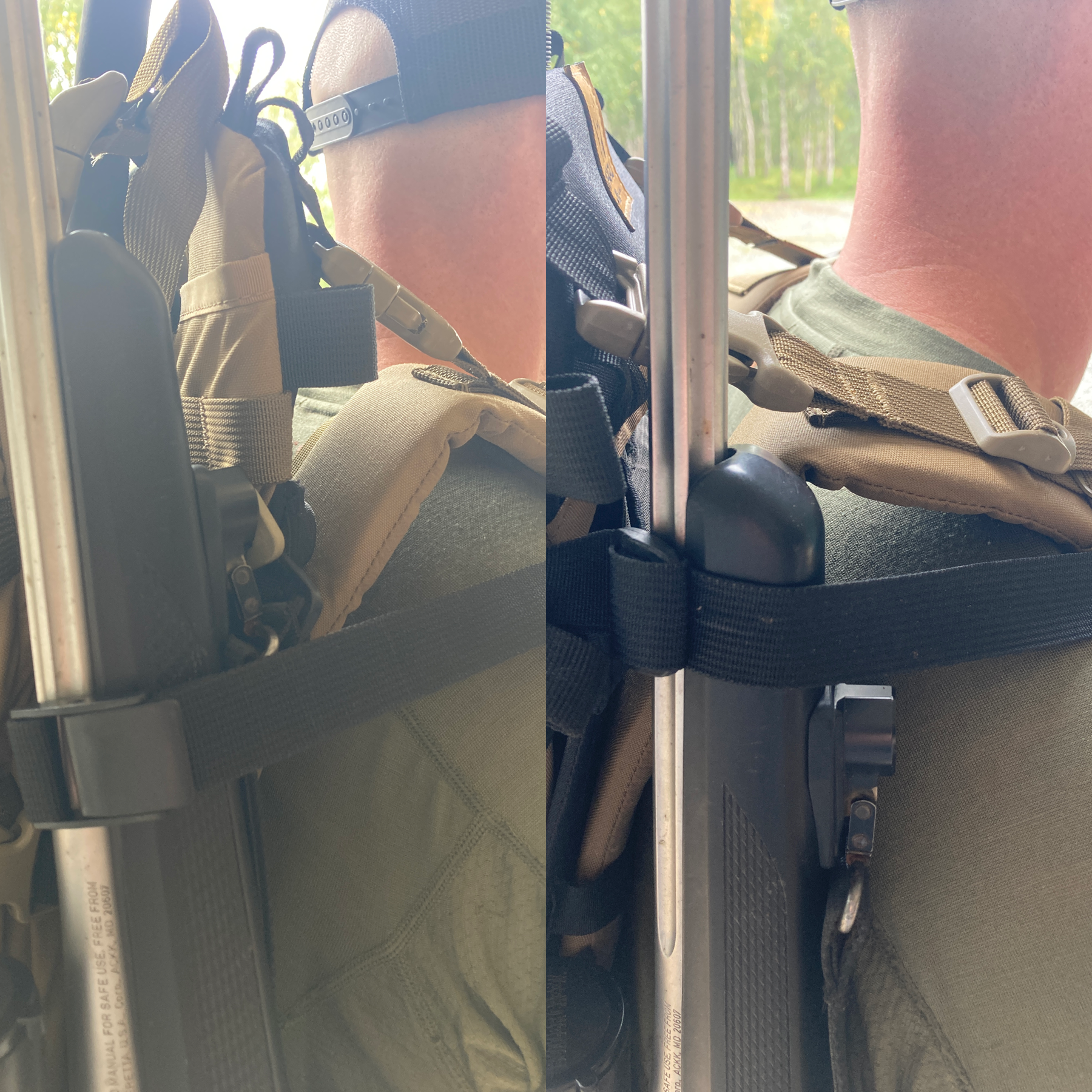
The cradle on the Slik sling is very similar to the Stone Glacier in design, albeit with heavier, more robust webbing and thicker bartacking. The cradle was easy to integrate into the waist belt of my Kifaru, and once in place, it maintained its position.
The Slik Sling was very easy to set up with the help of this installation video.
After setting up the Slik Sling, I was initially concerned with the amount of moving pieces, introducing more clutter onto my pack and adding more webbing to sort through on my chest area.
Carrying Convenience
As the second “behind the shoulder” type system of this test, the Slik Sling was a straight apples-to-apples comparison with the Stone Glacier system. As mentioned earlier, the Stone Glacier was the most comfortable of the 3 systems, and unfortunately, the Slik Sling was the least comfortable.
Over the course of 6 days of hunting mountain goats in the Southern Kenai Mountains, I found that I had issues with the consistency of carrying position. I believe this was due to the design of the securing system for the forestock. The method in which the forestock is secured is robust and holds the rifle tightly. However, it does allow some variation in where the rifle gets secured.
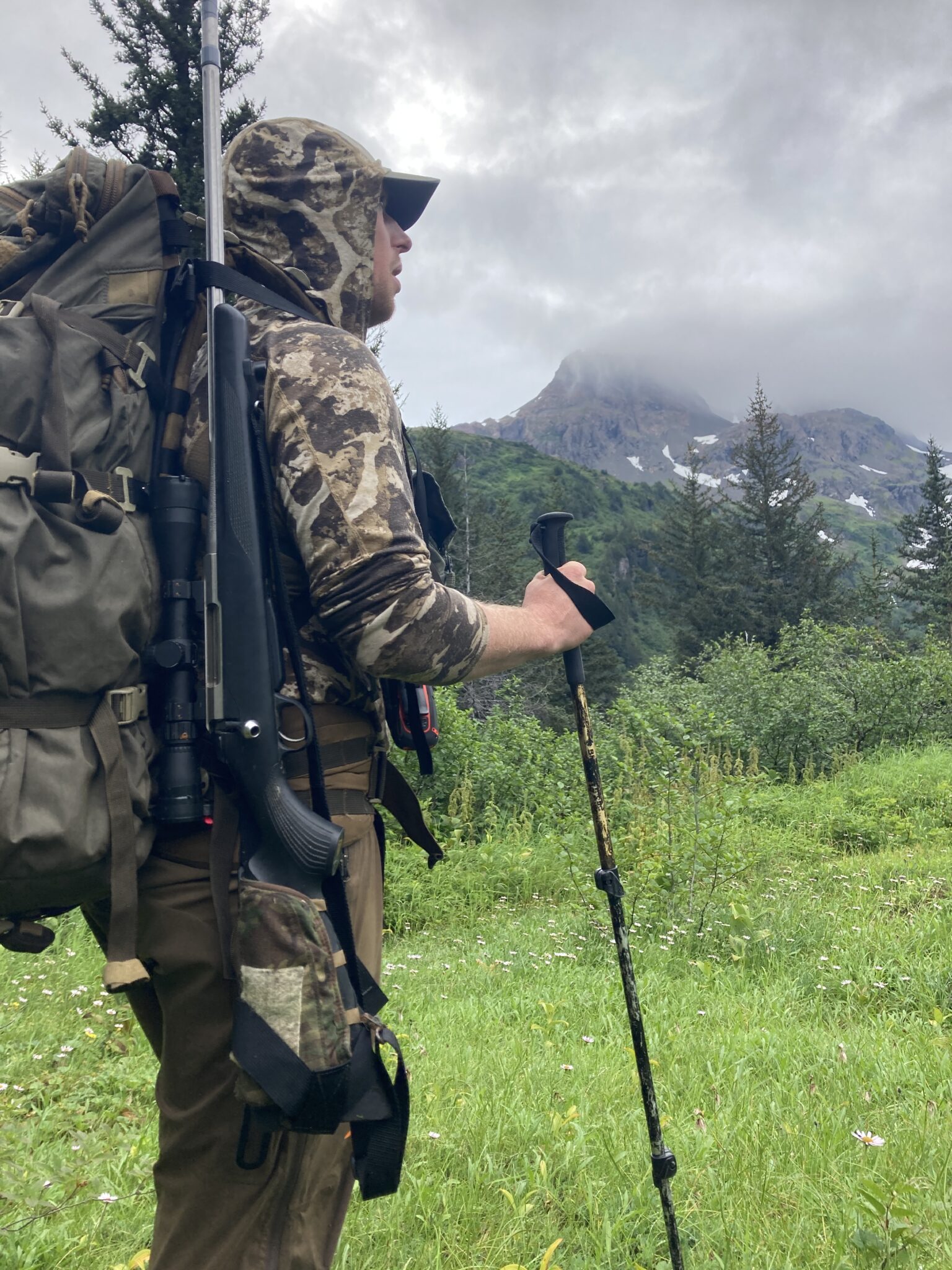
Meaning that the rifle can be secured within a small window created by the forestock strap. This variation means that sometimes it rode great, and other times it rode too far forward and would dig into my right rear deltoid. By the end of the trip and during the grueling pack out in a monsoon, I had figured out the right position, but not after a few days of trial and error.
Ease of Deployment
In comparison to the Kifaru and Stone Glacier systems, the Slik Sling was the most cumbersome to deploy. I wouldn’t say that it was hard to deploy, but it was not as simple and intuitive as the others. The securing system holds fast in all conditions and does not loosen inadvertently.
The method used to deploy your rifle is very similar to the Stone Glacier system. Pop the securing strap with your right hand while grasping the barrel with your left hand, then grab the stock to shoulder the rifle.
My reason for saying that this is the most cumbersome is based on the fact there are simply more pieces than the others. I had a few hang-ups during practice deployments that were remedied with repetitions. I will also say that these hang-ups were user errors from the incorrect routing of the release strap. Once I had worked through my issues, the rifle freely released time and time again.
Even though I would rank the Slik Sling as last among the three systems tested, once I had mastered proper installation of the rifle into the sling, it performed without flaw.
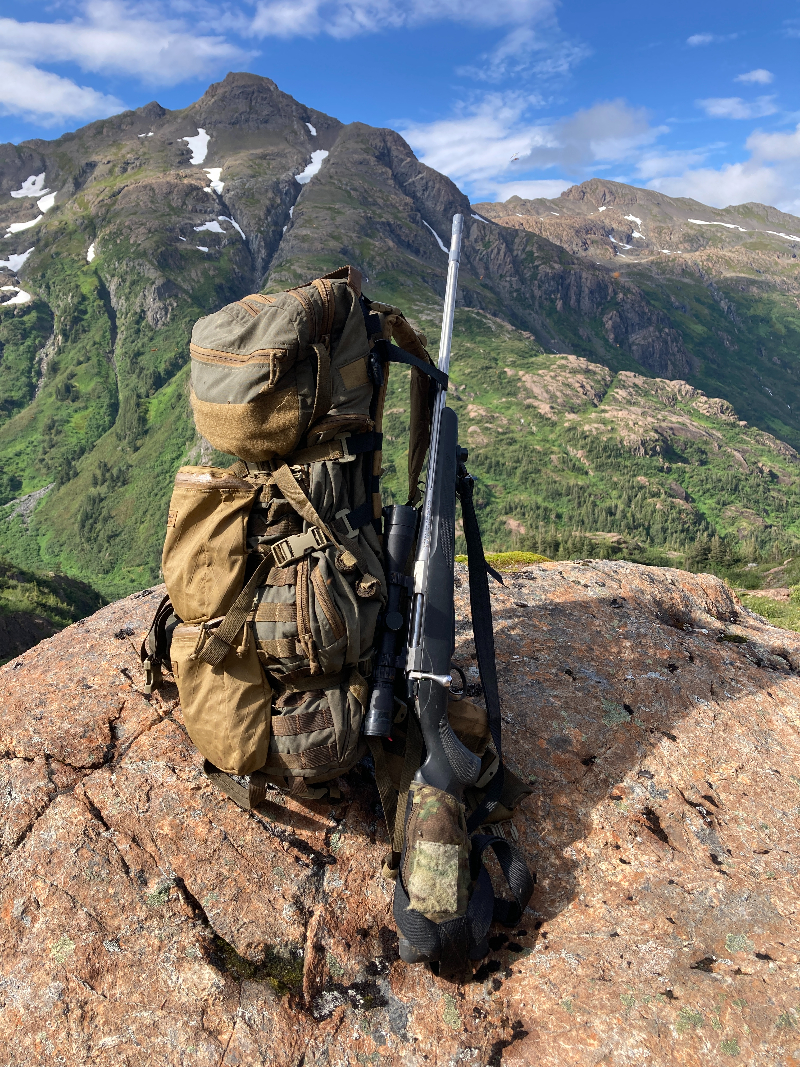
Reholstering Ability
The Slik Sling was as easy as the Kifaru GunBearer for holstering your rifle while wearing your pack. Since all of the hardware for securing and tightening this system is located on the shoulder strap, holstering while wearing your pack was simple. Although the ease of holstering a rifle while wearing a pack is not a highly weighted attribute, for those that need this ability, the Slik Sling is a great performer.
The cradle for the Slik Sling is not as burly as the Kifaru. However, it is more stout than the Stone Glacier. Taking your rifle in and out of the cradle was a non-issue, even for the crowded butt of my stock.
Overall Impression
The construction and components used in the Slik Sling were all high quality. Thanks to the installation video provided by Creative Outdoors, the installation was easy. Even though I found the sling to position the rifle in an uncomfortable spot initially, after some playing around, I found the sweet spot, and it rode beautifully. All in all, the Slik Sling performed as advertised, was easy to holster while wearing the pack, and integrated easily onto my Kifaru frame.
My biggest gripe is that the release system relies on two different plastic pieces in order to operate effectively. In my mind, I want the best/most efficient system with the least amount of parts. The Slik Sling is no doubt a useful system and, during my trials, operated smoothly.
Winners Circle
All three systems did the job I asked them to do; hold my rifle securely and be quick on the draw. Prior to these tests, I have always carried my rifle secured to the side of the pack or hanging off the top post of my freighter frame. After a decade of this nonsensical type of rifle carrying, I have finally found a better way to carry my rifle into the field; in a dedicated aftermarket rifle carrier.
As I write this, I am taking a break from packing for 22 days of moose guiding and will be relying on one of these systems to support my rifle during these hunts. After extensive field trials, I have decided to commit to running my favorite system; a Frankenstein combination of the Kifaru GunBearer cradle and the forestock system from Stone Glacier. That very statement is like trying to mix oil and water, but following my trials, I’ve found that this combination, when used on a Kifaru frame, meets my needs perfectly. I enjoy the robust construction of the Kifaru cradle and its seamless integration onto my pack’s waist belt. In addition, I’ve found that I prefer the behind-the-shoulder style systems best, and my choice for that is the Stone Glacier Quick Release Sling.
Part of the fun that is the lifestyle of backcountry hunting is playing with new gear and gadgets. Those of us that venture off into the wild, as consumptive users of the natural world, are always looking at ways to be more efficient, more comfortable, and most importantly, more deadly. The gear we choose is a part of the equation of success, but never lose sight that it is only ONE part of that equation. Happy September, and Cheers to sore backs and heavy packs!
Comment or ask Jake questions here.














